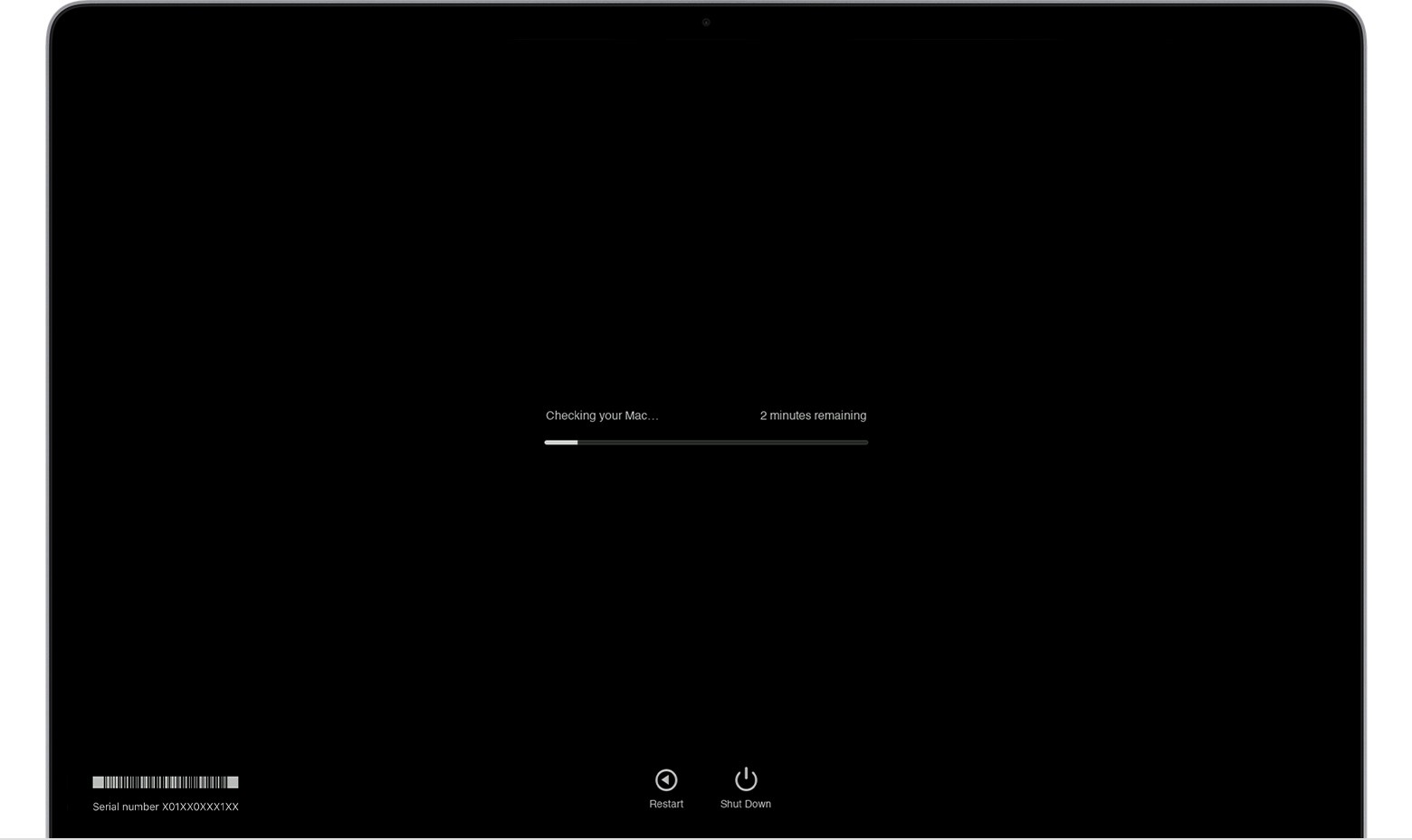Experiencing unexpected slowdowns, freezes, or unusual behavior on your Mac? Before assuming the worst or rushing to a repair shop, your Mac has a built-in tool to help you understand what might be happening under the hood. This powerful feature is called Apple Diagnostics, previously known as Apple Hardware Test, and it allows you to perform a Self-diagnosis Test to identify potential hardware problems. This guide will walk you through how to use Apple Diagnostics to check your Mac’s health and what to do with the results.
Preparing Your Mac for a Self-Diagnosis Test
To ensure accurate results from your self-diagnosis test, it’s important to prepare your Mac properly. Follow these steps before running Apple Diagnostics:
- Update macOS (If Possible): If your Mac is still functional enough, it’s recommended to install the latest macOS updates. This can resolve software-related issues that might be mistaken for hardware problems. You can usually find update options in System Settings under “Software Update”.
- Power Down Your Mac: Completely shut down your Mac. Don’t just put it to sleep; a full shutdown is necessary for the diagnostic test.
- Disconnect Peripherals: Unplug all external devices from your Mac, except for essential ones. Keep only your keyboard, mouse or trackpad, display, and Ethernet cable if you use a wired internet connection. Ensure your Mac is also connected to its AC power adapter.
- Ensure Proper Ventilation: Place your Mac on a hard, flat, and stable surface. Make sure there is good ventilation around it to prevent overheating during the test.
Initiating the Self-Diagnosis Test with Apple Diagnostics
The process to start Apple Diagnostics varies slightly depending on whether your Mac uses Apple silicon or an Intel processor. Determine which type of Mac you have and follow the corresponding instructions to begin your self-diagnosis test.
For Macs with Apple Silicon:
- Press and Hold the Power Button: Locate the power button on your Mac and press and hold it down. For Mac laptops with Touch ID, the Touch ID button also serves as the power button.
- Access Startup Options: Continue holding the power button. Your Mac will turn on and eventually display startup options. You’ll know you’ve reached this stage when you see the word “Options” appear on the screen. Release the power button at this point.
- Enter Diagnostics Mode: Once you see “Options”, press and hold the Command (⌘) and D keys simultaneously on your keyboard. This will initiate Apple Diagnostics, and your Mac will begin the self-diagnosis test.
For Intel-Processor Macs:
- Start and Hold the ‘D’ Key: Turn on your Mac by pressing the power button. Immediately after powering on, press and hold the D key on your keyboard.
- Release for Progress Bar or Language Selection: Continue holding the D key until you see either a progress bar appear on the screen, indicating that the self-diagnosis test is loading, or you are prompted to choose your preferred language. Release the D key once you see either of these prompts.
If the ‘D’ key method doesn’t work, try holding Option (⌥) and D keys at startup instead. If neither method works, consult Apple’s guidelines for using keyboard combinations during startup for further troubleshooting.
You might be asked to select your language at the beginning of the process. Also, ensure you have an active network connection, as Apple Diagnostics may use it to provide more detailed support options. You can connect to Wi-Fi using the Wi-Fi menu located in the upper-right corner of your screen if needed.
Understanding Your Self-Diagnosis Test Results
Once initiated, Apple Diagnostics will run a comprehensive self-diagnosis test of your Mac’s hardware. You’ll see a progress bar on the screen during this process.
After the test is complete, Apple Diagnostics will display the results. If no hardware issues are detected, you’ll see a message indicating that “No issues found”.
However, if Apple Diagnostics identifies a potential hardware problem, it will present the results along with one or more reference codes. These reference codes are crucial for understanding the nature of the issue.
Options After the Test:
- Run the test again: To re-verify the results, click “Run the test again” or press Command-R.
- Restart Your Mac: To exit Diagnostics and restart your Mac normally, click “Restart” or press R.
- Shut Down: To power off your Mac, click “Shut Down” or press S.
- Get Started (For Support Options): If you received reference codes or want to explore service and support options, and your Mac is connected to the internet, click “Get started” or press Command-G. This will restart your Mac and open a webpage with further information and support resources from Apple. After reviewing the information, you can choose to Restart or Shut Down from the Apple menu.
Apple Diagnostics Reference Codes and Further Assistance
Apple Diagnostics reference codes are essential for pinpointing the source of a hardware problem. Each code corresponds to a specific hardware component or issue. Apple provides a list of Apple Diagnostics reference codes that you can consult to understand what each code means. This list is a valuable resource for interpreting your self-diagnosis test results.
If your self-diagnosis test reveals hardware issues, or if you continue to experience problems even if no issues were found, it’s recommended to seek further assistance. Apple’s support website offers a tool to Get suggestions based on the issues you are experiencing. Providing detailed information about your Mac’s behavior and any reference codes you received will help Apple Support provide the most effective guidance and solutions.
By using Apple Diagnostics to perform a self-diagnosis test, you can take the first step in understanding and resolving potential hardware issues on your Mac, potentially saving time and unnecessary repair costs.
